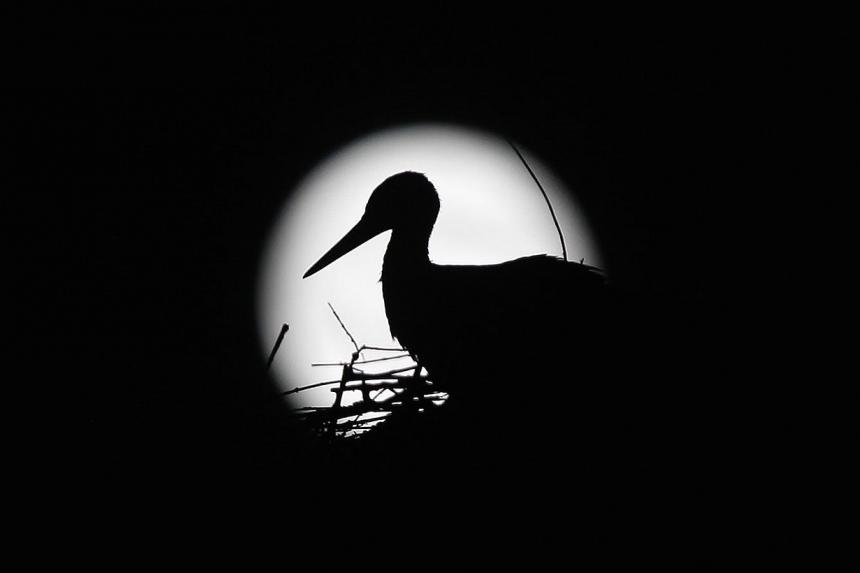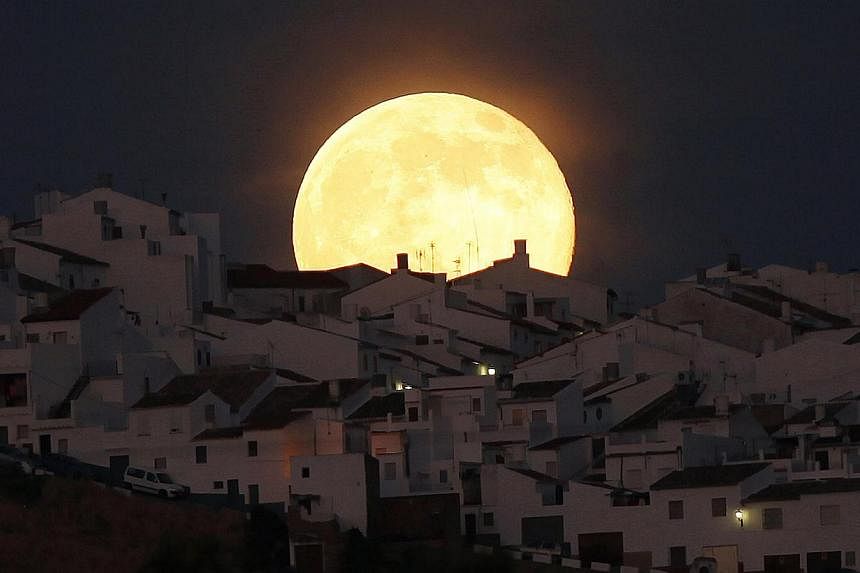An exciting lunar occurrence is dawning on the Earth.
The supermoon, a celestial phenomenon in which the moon appears larger and brighter than normal, was last seen two days ago on July 12 by people around the world.
Extraordinary photographs of a giant, brilliant orb hovering over the landscape have been surfacing all over the Internet. And with more sightings coming up later in the year, don't expect the pictures to stop.
Before you whip out your camera and start shooting for the moon, here are five things you should know about supermoons:
1. The supermoon looks bigger because it is nearer the Earth
Astrologer Richard Nolle coined the term more than 30 years ago, stating that a supermoon is "...a new or full moon which occurs with the moon at or near (within 90 per cent of) its closest approach to earth in a given orbit".
This phenomenon causes the moon to appear 14 per cent bigger and 30 per cent brighter than usual.
As the moon makes an elliptical (oval-shaped) orbit around the Earth, it causes the moon's distance from the Earth to be varied each month. During a supermoon, the moon comes within approximately 360,000km of the Earth.
2. It doesn't happen only once in a blue moon.
Unlike many celestial phenomenona, supermoons actually happen fairly often, with four to six supermoons a year on average.
There are a total of five supermoons this year. The first new moon supermoon occurred on Jan 1, New Year's Day, and the second on Jan 30. However, this double appearance within the month of January will not happen again until January 2018. The most recent supermoon was the full moon of July 12.
Be sure to catch the next supermoon sighting, which will be on Aug 10 at 6.09pm GMT (2.09am next day Singapore time) and Sept 9 at 1.38am GMT (9.38am Singapore time). The Aug 10 supermoon is reported to be the closest one to Earth of the year.
3. Supermoons exert a special force on the Earth's tides
Supermoons lead to a higher tide, as the line-up of the Earth, moon and sun generates wide-ranging tides known as spring tides.
Tides on Earth are mostly created by the intensity of the moon's gravitational pull from one side of the Earth to another.
All new and full moons result in larger tides than usual, but supermoons further elevate the tides due to the closer positioning of the moon to the Earth.
4. Speculated links to natural disasters
There have been speculations that supermoons might have a direct connection to earthquakes, tsunamis and natural disasters. The 2011 Japanese Earthquake and the 2005 Indonesian tsunami, for example, coincidentally occurred during a supermoon.
However, this theory has been debunked by many scientists due to inadequate proof.
5. Catch the supermoon at moonrise and moonset
The supermoon appears larger when it is near the horizon due to an optical illusion. Hence, the best way is to view it just after it rises or before it sets.
For maximum effect, try looking at the supermoon when it dips behind buildings or trees. The moon is said to appear even greater against those landscapes.
Tip: Know how to capture the supermoon like a superpro
If you are using a smartphone, try to frame the photo and set the exposure for the brightness of the moon. Experiment with night mode and ISO settings (start at around 100), and keep your camera still by using a tripod.
If you are using a camera, use a longer lens so that your photo will look better, and shoot in RAW rather than JPEG for better resolution. Again, brace your camera by using a tripod. Shoot on manual exposure and focus to compensate for the high contrast between the brightness of the moon and the surrounding darkness.
Check out this video for more stunning pictures of the latest supermoon:




